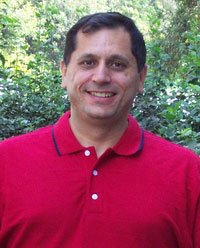| Posted: August 7, 2009 |
New MOCVD reactor sparks the beginning of a new nanofabrication research center |
|
(Nanowerk News) A dedicated laboratory space on the UC Riverside campus moves Bourns College of Engineering another step closer to a more comprehensive nanoengineering center. The space at Pierce Hall is now home to an advanced metal, organic, chemical, vapor, deposition (MOCVD) reactor.
|
|
An MOCVD reactor is used to fabricate nanostructures including nanowires (structures that have a thickness or diameter constrained to tens of nanometers or less and an unconstrained length) and thin films having precisely controlled dimensions for applications in nanoelectronics and optoelectronics.
|
 |
| Cengiz Ozkan, professor of mechanical engineering.
|
|
“The new facility will be used for research in nanowire fabrics, transistor arrays, solar cells and sensors, and will provide materials for many other nanoengineering applications," said Cengiz Ozkan, professor of mechanical engineering. “It’s a very important addition to our arsenal of tools.”
|
|
This technology will enable researchers to produce superior material quality and process efficiency.
|
|
“One area to benefit from the advanced technology will be the production of flexible, low-cost, high-performance solar cells composed of group III-V nanowires, which are expected to provide higher conversion efficiencies compared to thin film technologies,” Ozkan said. “Nanowires having typical dimensions of 10-100 nm diameter and 1-5 micron length permit electrons and holes to be collected before they can recombine (loss) and maximize absorption. We are starting to do research on multisegment or heterojunction nanowire solar cells that can absorb a greater range of the light spectrum, compared to what you could achieve with conventional silicon based solar cells.”
|
|
The vast range of applications including solar cells for automotive, household and military applications, and personal applications including mobile devices like cell phones and laptop computers, will greatly benefit from the new solar technologies.
|
|
|
|
This move will also expand collaboration outside the university. “It will bring more researchers together,” Ozkan said. “We can offer more materials that will benefit all engineering disciplines as well as physics, chemistry, and biology.”
|
|
This new nanofabrication tool adds to a variety of technologies available to Bourns researchers including molecular beam epitaxy (MBE), chemical vapor deposition (CVD) material growth facilities and micro-Raman characterization equipment. The next leap in nanotechnology at UCR is the 2010 completion of the $66 million Materials Science and Engineering Building, which includes a 20,000-square-foot clean-room facility.
|

